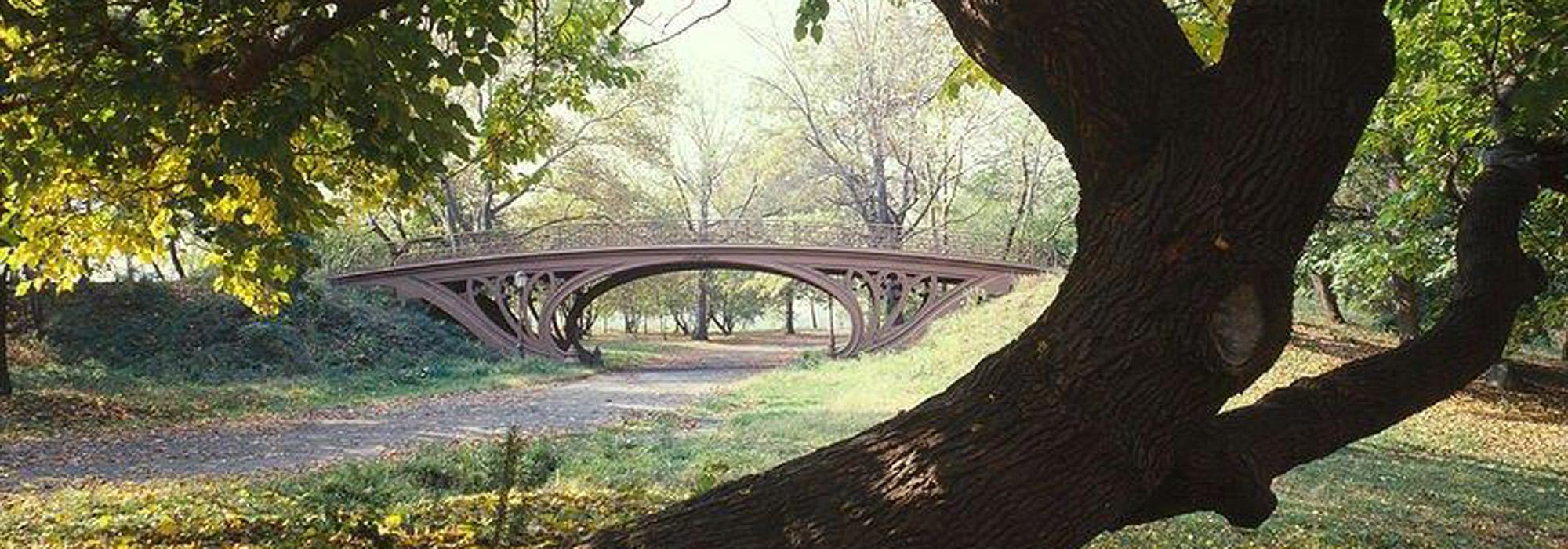The National Endowment for the Arts Awards $40,000 Art Works Grant to The Cultural Landscape Foundation
Media Contact: Nord Wennerstrom | T: 202.483.0553 | M: 202.225.7076 | E: nord@tclf.org
Funding supports creation of online guide – The Landscape Architecture Legacy of Frederick Law Olmsted
Washington, D.C. (February 13, 2019) – The Cultural Landscape Foundation (TCLF) today announced it has been awarded a National Endowment for the Arts (NEA) Art Works grant totaling $40,000. This grant will support the creation of What’s Out There: The Landscape Architecture Legacy of Frederick Law Olmsted, a comprehensive online guide to the legacy of Frederick Law Olmsted, Sr. (1822-1903), known as the ‘father of American landscape architecture,’ and his many successors. The online guide will be an important part of a constellation of programming celebrating the bicentennial of Olmsted's birth. Dovetailing with TCLF’s What’s Out There database, an authoritative, GPS-enabled online resource on cultural landscapes nationwide, What’s Out There: The Landscape Legacy of Frederick Law Olmsted will include concise essays on 200 landscapes, biographies of practitioners associated with Olmsted and his successor firms, and overarching narratives on major park systems and themes, with accompanying maps and historic and contemporary photographs.
Unsurpassed in the field of landscape architecture, Frederick Law Olmsted, Sr., defined and named the profession and designed many of America's most beloved nineteenth-century parks and landscapes, including New York City’s Central Park and Prospect Park, the Biltmore Estate in Ashville, NC, and the U.S. Capitol grounds in Washington, D.C. During his remarkable 40-year career, Olmsted and his partners and employees created the first park systems, urban greenways, and suburban residential communities in this country. His collaborations with Charles Eliot, Calvert Vaux, and Warren Manning allowed his influence to continue long past his retirement in 1895, a legacy further sustained by his sons, John Charles and Frederick, Jr., who were both stalwart advocates for the emerging profession of landscape architecture. Their firm, Olmsted Brothers, was by far the largest landscape-architecture practice in the United States in the early twentieth century, with a portfolio that included urban park systems, roadways, state capitols, planned communities, institutional grounds, and academic campuses.
"The National Endowment for the Arts Art Works Grant is extremely important in helping raise the visibility of Olmsted, his legacy, and the many people who worked with him and the successor firms," said Charles A. Birnbaum, TCLF's president and CEO, adding, "on behalf of TCLF, we are very grateful to the NEA and the jurors for this honor."
About the National Endowment for the Arts Art Works grants
Art Works is the National Endowment for the Arts’ principal grantmaking program. The Arts Endowment convened panels to review 1,605 eligible applications for funding and the agency will award 972 grants ranging from $10,000-$100,000 totaling more than $25 million.
For a complete listing of projects recommended for Art Works grant support, please visit the NEA Web site at http://arts.gov.
About the National Endowment for the Arts
Established by Congress in 1965, the NEA is the independent federal agency whose funding and support gives Americans the opportunity to participate in the arts, exercise their imaginations, and develop their creative capacities. Through partnerships with state arts agencies, local leaders, other federal agencies, and the philanthropic sector, the NEA supports arts learning, affirms and celebrates America’s rich and diverse cultural heritage, and extends its work to promote equal access to the arts in every community across America. Visit arts.gov to learn more about NEA.
About The Cultural Landscape Foundation
The Cultural Landscape Foundation (TCLF), is a 501(c)(3) non-profit founded in 1998 to connect people to places. TCLF educates and engages the public to make our shared landscape heritage more visible, identify its value, and empower its stewards. Through its website, publishing, lectures, and other events, TCLF broadens support and understanding for cultural landscapes.
# # #



